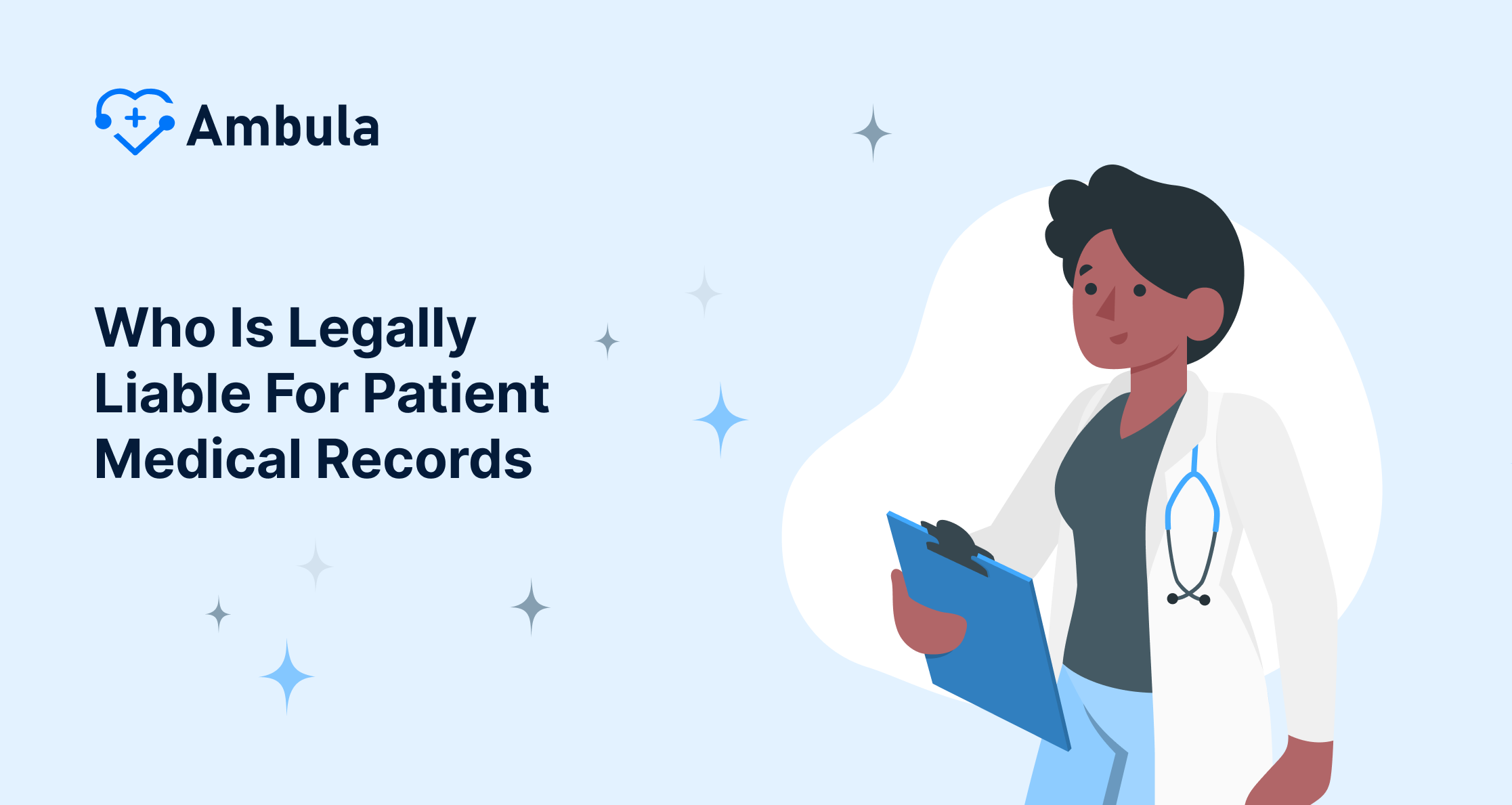Nowadays, with healthcare zooming along super quick, doctors gotta figure out how to get more done. There’s a ton of heat on these medical pros to give awesome care even though they’ve got more patients than hours in a day. Getting doctors to work smarter is mega important because it not ups the game in patient care but it’s also key for keeping medical places running great and sticking around for the long haul.
This piece digs into top tactics to up a doctor’s efficiency. We’re gonna look at making paperwork easier, getting patients through faster, and using cool tech and data science stuff. Plus, we’ll chat about why it’s super important to always keep getting better in places where they take care of sick people. If hospitals and clinics start doing these things, they’ll work smarter and not as hard, and the people they help will get healthier, all while the medical pros can enjoy their downtime, too.
Make Paperwork Simpler
Give Away Jobs That Aren’t About Medicine
Doctors increase their productivity when they pass on non-clinical duties. Nurses should give some jobs to the team. Guidelines by the American Nurses Association offer ways to decide on delegation. They say to remember the Five Rights of Delegation when passing tasks.
- Make sure the task is legal and follows the rules of the organization.
- Check how complex a patient’s needs are before you give someone else the job.
- Pick the person with the right skills and know-how for the task.
- Watch over the work like the Nursing Practice Act says you should.
- Explain the job and what you expect.
Set Up Systems to Document Stuff Well
Effective ways to record info can lessen the load of paperwork. When docs use medical dictation, they get to spend more time with patients and less on writing stuff down. Professionals who know the ropes deal with the paperwork part. This way docs end up meeting more patients and have more hours they can bill, which makes up for the money spent on keeping records.
Make the Most of EHR Systems
Getting the best out of Electronic Health Record (EHR) systems is super important for being super-efficient. Some smart moves are:
- Adopting templates to handle regular checkups and medical actions and guide patients.
- Putting e-prescribing into play to make drug handling smoother.
- Fusing Health Information Exchange to snatch up patient info fast.
A particular analysis revealed that a system that makes EHR alerts standard and limited cut the average daily alerts from 128 to 116 for each family doctor. This change could save around 1.5 hours each week. Plus, bringing medical scribes into the picture seems to boost how much work doctors can do and makes them happier on the job, too.
Healthcare workers can make things smoother by using clever tricks, which helps not just with cutting down on too much work but also with looking after patients way better.
Make Getting Appointments and Seeing Doctors Easier
Use Smarter Ways to Schedule
To help doctors get more done, medical offices might want to pick up some smarter ways to make appointments. “Wave scheduling” is a neat trick that’s more flexible than the usual strict times. Rather than sticking patients into back-to-back 15- or 30-minute spots, this method books two regulars at the start of the hour and another halfway through. By doing it this way, docs can deal with appointments that need more time and stuff that pops up out of nowhere.
Crack open the calendar a good 13-15 months why don’t ya? Doing this lets the crew line up those annual check-ups for patients even when swinging by on the dot 12 months later ain’t an option. Plus, penciling in the next visit right as the current one wraps up is a smart move – it’s a real timesaver and oils the gears of the whole operation.
Shorten the Hang Around Time
Patients often feel less content and have worse care results if they hang around too long. Research points out that health providers who keep folks waiting for about 13 minutes get top marks. However, the ones making people wait over 34 minutes get not-so-great feedback. To tackle this problem, practices might wanna:
- Make clinical workflows smoother so patients glide from setting up an appointment to getting post-visit help.
- Guess how many spots you can open for newbies in a set time to match how many people want appointments.
- Use telehealth to slash how long folks wait and cut down on folks showing up late.
- Put in online booking stuff to make fewer mess-ups when people try to get on the schedule.
Before appointments, collect patient info to avoid holdups in treatment.
Batch Up Patient Meetings
Getting a bunch of patients together for a single session with their health expert can make it easier for more folks to get care and help doctors get more done. Once tried, this method got some good feedback:
- In groups, 85% of the folks who were seen made the choice to go for the group-style check-up again the next time they needed an appointment.
- When talking about how they felt about their appointment, 79% of the patients dealing with shared medical visits gave it a top-notch “excellent” rating.
- In certain scenarios, the work output has gotten a 31% boost.
Putting these moves into play, medical practices stand to make things go smoother for patients, slash the time they sit around waiting, and make things better for both the doctors and the patients being happy with their care.
Harness Tech and Data Analysis
Tap into Telemedicine
Telemedicine is causing a revolution in how we get health care, making it easier for folks to get help and helping doctors and nurses do more work faster. Doctors can see more patients quickly, and some offices are even pulling off more visits every week. Telemedicine is super handy for the simple stuff we gotta take care of, like looking over test results, yearly checkups, and getting more meds. Plus, it’s a big help for people who need care but have a tough time getting to the doctor maybe ’cause they don’t have a ride or something.
Roll Out Practice Management Apps
Healthcare pros now see practice management apps as critical, making everyday tasks smoother and boosting how well they look after patients. Peep these main parts:
- Patient Planning: Organize visits like a boss and dodge double-booking drama.
- Patient Records on Lock: Get to patient info and tweak it on the fly.
- Money Matters: Making bills and getting paid gets way easier.
- Playing by the Rules: Keep track of saying “yes” to patients and sticking to the rule book.
Healthcare pros get a boost in refining their practice management, stepping up care quality, and sticking to regulations.
Dig Into Data to Spot Hiccups
Analyzing data is super important for tackling patient care and running things. It gives health experts the power to:
- Look at patterns to improve people’s health and way of living.
- Spot illnesses soon and get quick help from doctors.
- Find out where diseases might spread and get better at stopping them.
- Spot folks who could get sick, making medicine more personal.
Providers analyze patient profiles to spot folks needing to focus on prevention nudging them toward proactive health habits or care plans to prevent sickness. Plus, running the numbers can boost the dough by spotting high-cost patients and finding out which docs have pricey treatment ways.
Keep Getting Better All the Time
Learn from Your Buddies
Healthcare Systems that work together, like Collaborative Learning Healthcare Systems (CLHSs), are all about making a space where people can share ideas and team up. They push approaches to keep getting better and to dig deep into research. This gives medical experts a chance to tackle issues and expand their knowledge side by side. It’s super important for bosses to help this team spirit grow. They gotta build a culture where everyone trusts each other, lead by setting an example, and train up-and-coming leaders to keep these systems evolving.
Put in Place Regular Check-Ups on How Things Are Going
In healthcare, squeezing in regular check-ups on job performance is key, even though there’s never enough time, and folks are short-handed. These check-ins are great for giving a shout-out to the hard workers, making tight-knit teams, and spotting when someone’s running on empty. Somewhere around a third to over half of America’s nurses and docs are waving red flags of exhaustion. When you get fresh team members, hitting them with a review after just three months could sort out any trouble spots before they dig in deep. And hey, to make all this reviewing a breeze, there’s software made just for healthcare that makes it a one-stop, smooth-running show.
Time for More Learning
Healthcare workers need ongoing training to build up a culture where getting better all the time is just what you do. They can get a lot out of programs that are all about making you a better leader, figuring out strategies, bargaining, and handling disagreements. These programs gotta let folks use what they learn right away when they get back to their jobs. This helps them do better for the long haul. They should learn about keeping patients safe, making care better, bringing new ideas to the table, and handling the money side of things, too. When health places keep teaching their people new stuff, it means their teams can make things better and kick their performance up a notch.
Ending Thoughts
So, to sum it up, it’s super important for doctors to get more done in less time in our current medical world. By making paperwork easier, making sure patients move through their appointments, using cool tech, and always trying to do better, medical pros can work smarter and take better care of folks coming in for help. These moves are big game changers for making doctors feel less fried, happier with their gigs and helping medical places and big health groups do well.
Healthcare organizations must stay dedicated to enhancing how doctors work. They gotta keep pushing forward and get everyone from the top down to chip in. After rolling out these new tactics, med professionals can build a health system that’s smooth sailing and gets the job done better. This isn’t just great for the docs; it makes patients happier and healthier, too. At the finish line, we’re aiming for a place where docs can zero in on the big deal: delivering top-notch care to folks who need it.
FAQs
1. What methods boost a doctor’s work speed?
You can make doctors work faster with these 22 ideas: put management talents first, let doctors spend more time with patients, share the workload right, smooth out the patient rounds, talk progress notes right in the check-up space, pass info with handouts, create a solid plan for seeing folks, and make sure you confirm appointments.
2. How can you get doctors involved?
To get doctors onboard, there are six cool ways: hunt for a shared goal, choose a way to talk that pulls them in, see doctors as teammates not just clients, shape the plan for involvement to fit various crowds, pick methods that draw them into making things better, and apply different ways of getting them into the action.
3. Wanna ramp up how much you get done?
Try out these 10 tricks: make things less complicated, remember stuff with alarms always check in on your targets, cut down on stuff that eats your time, use apps that help you do more, keep your crew pumped, focus on one thing at a time, and give ’em health programs.
4. Hunting for the top way to figure out doctor work norms?
You’ll hit the mark by tracking relative value units (RVUs), ’cause they tally the worth of docs’ efforts in line with how much time and hard work they put in.






